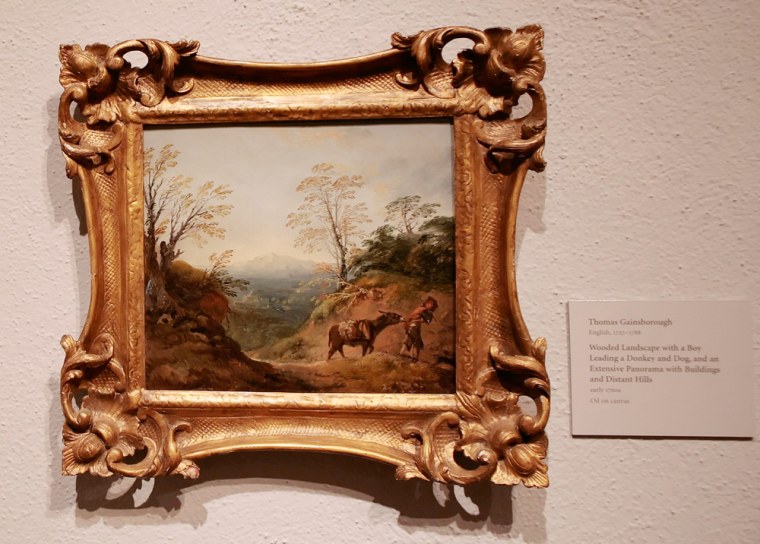The Clark Art Institute, long known for its French and American paintings, is making room for a $90 million British invasion thanks to a donation from the foundation of Sir Edwin Manton.
Works by Renoir, Monet, Homer and Sargent will now share space with a flood of Turners, Constables, Gainsboroughs and other pieces from the English Romantic period of the early 1800s that were owned by Manton, a driving force behind AIG Insurance who died in 2005 at 96.
The new pieces — some of which were previewed by The Associated Press — include about 200 oil paintings, watercolors and studies valued at about $40 million. They come with a $50 million cash donation, making the gift the largest the Clark has received since it opened in 1955.
“This is a very big deal,” said Franklin Kelly, senior curator of American and British art for the National Gallery in Washington, D.C. “This makes the Clark a very important center for study in British art.”
The Clark already has a healthy endowment of $340 million and has become a well-known training ground for art historians. But the money from the Manton Foundation will allow the museum to greatly expand its research abilities, director Michael Conforti said.
“We have always said we are as much a research center as we are an art center,” he said. “We have scholars coming from all over the world, and now we’ll be able to support even more academic conversations.”
In recognition of the donation, the museum will rename the building that houses its research and academic program the Sir Edwin and Lady Manton Research Center.
Gift adds to ‘modest core collection’
The museum does have a smattering of British paintings and featured a Turner exhibit in 2003. But the works from England so far have amounted to what Conforti calls a “modest core collection.”
“The Clark is a heavily French place,” said Kelly, who is familiar with the Manton collection. “If you’re going to have the presence of England in that mix of paintings, you need the best. You need these Gainsboroughs and Turners and Constables.”

Interested in the art created by his fellow Englishmen, Manton developed an eye for almost abstract scenes while at the same time he appreciated landscapes that leave less to the imagination.
In Turner’s “Off Ramsgate,” for example, there’s a sense of uncertainty the artist creates in the swirls and streaks of paint that outline a dark ship on the horizon and a lighter sailboat closer to shore. The figures of a woman and her children rise from the beach, but it’s unclear in which boat they’re interested, or if they’re really interested at all.
Where Turner makes a mystery of nature, John Constable turns the outdoors into a place of calm, pastoral beauty.
The scene he creates in “The Wheatfield” puts reapers to work in a vast field bordered by perfect green trees while clouds drift across the sun and a boy relaxes with his dog.
“Turner was the stay-at-home painter who was making beautiful views of England,” said Richard Rand, the Clark’s senior curator. “Turner traveled much more and was more interested in the unpredictability of nature and disaster. The fact that this collection has that kind of range makes it even more interesting.”
Collection boosts teaching role
And keeping with the Clark’s mission as a teaching museum, the Manton collection offers a strong showing of studies, giving some insight into how artists developed their final pieces.
“Modern audiences like to look over the artist’s shoulder and watch him work,” Rand said. “It makes the art personal and approachable because you could see the hand of the artist at work.”
Manton moved to New York from England in 1933 and joined AIG. He became president of the company in 1942, and served as its chairman from 1969 to 1974. While the art he collected wasn’t displayed publicly, he played an active role in the art world. He became one of the most generous contributors to the Tate in London and established the American Patrons of the Tate in 1988.
While he made his home in the United States, Manton never renounced his British citizenship and was knighted in 1994 in recognition of his philanthropy.
“He preferred to remain under the radar with his own collection,” Rand said. “A lot of this was done for his own enjoyment. But now his legacy is that he shared it with the public.”
